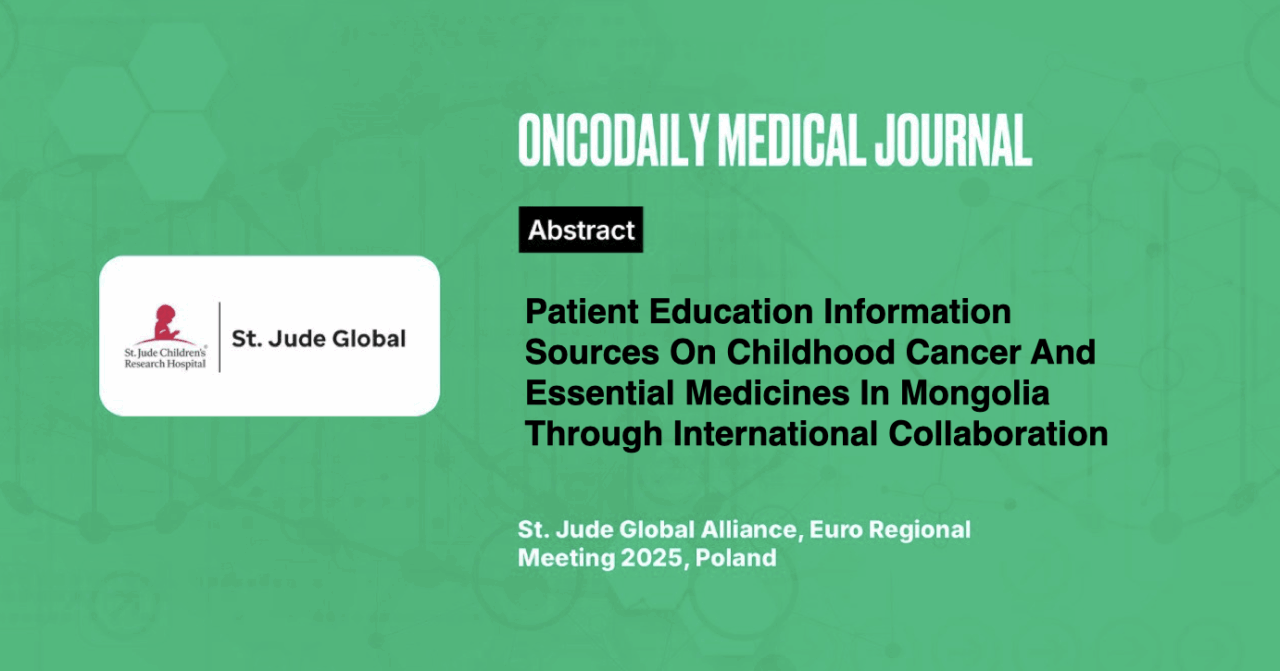Patient Education Information Sources On Childhood Cancer And Essential Medicines In Mongolia Through International Collaboration
Abstract
Introduction: Approximately 140 children and adolescents are diagnosed with cancer each year in Mongolia. Mongolia is a focus country of the Global Initiative for Childhood Cancer (GICC) and Global Platform for Access to Childhood Cancer Medicines (GPACCM), which aims to facilitate the provision of essential cancer medicines in the country.
However, families facing childhood and adolescent cancer in Mongolia have limited access to patient education resources in native language, negatively impacting their health literacy.
Methodology: Produced by St. Jude Children’s Research Hospital, the Together by St. JudeTM online resource serves as a global source of information and education for families facing childhood and adolescent cancer, regardless of where the patient receives treatment. In partnership with the St. Jude Children’s Research Hospital, we identified informational needs among Mongolian families through survey, developed disease and medicine factsheets based on existing English content, and localized the materials.
Results: Factsheets on six disease factsheets and 22 medicine factsheets were developed in alignment with the priorities of the GICC and the GPACCM. Each disease factsheet provides an introduction to a specific type of childhood cancer, along with sections on symptoms, diagnosis, treatment options, and support for patients and families. The text was written in plain language to enhance readability and facilitate accurate translation. Thoughtfully designed medical illustrations complement the written materials.
Each factsheet includes key points and suggested questions for families to ask their care teams.A needs assessment was conducted to ensure that the factsheets addressed the most pressing informational gaps for families. Open communication and continuous feedback guided the localization process, ensuring cultural and linguistic appropriateness. Third-party review of translations ensured accuracy, while beta-reading assessed readability and comprehension.
Conclusion: This initiative highlights the value of international collaboration in expanding access to high-quality health information, particularly for families who speak low-access languages like Mongolian.





